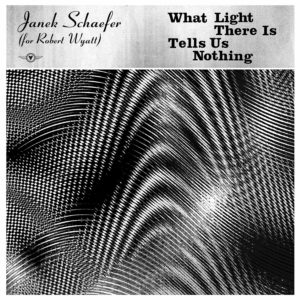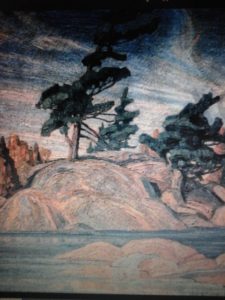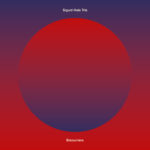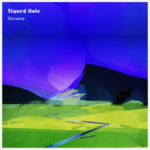Archives: November 2018
2018 9 Nov.
„It was an early obsession …“
Manafonistas | Filed under: Blog | RSS 2.0 | TB | Tags: Jeff Tweedy, Wilco | Comments off
2018 9 Nov.
Melancholic Sunday
ijb | Filed under: Blog,Gute Musik | RSS 2.0 | TB | Tags: Berlin, Bill Frisell, ECM, Jazzfest, Kim Myhr, Mary Halvorsen | 1 Comment
Das Jazzfest Berlin beeindruckt jedes Jahr mit einem einzigartigen Programm bekannter und zugleich durchweg spannender internationaler Musiker/innen aus dem weiteren Jazzbereich. Ich kann hier immer wieder Anfang November, nur wenige Minuten von meiner Wohnung entfernt, eine beeindruckende Menge hochinteressanter, oft auch seltener Konzerte erleben.
In diesem Jahr hat die neue Leiterin Nadin Deventer die vier Festivaltage so geschickt wie ambitioniert nach thematischen Überlegungen geordnet, unter anderem gab es den „Fokus: Chicago“ mit Nicole Mitchells Black Earth Ensemble, dem Projekt ihres aktuellen Albums Mandorla Awakening, das Art Ensemble of Chicago erstmals seit 27 Jahren wieder in Berlin und Trompeten-Jungstar Jaimie Branch. Zusätzlich traten unter dem thematischen Überbau „Blick zurück in die Zukunft afroamerikanischer Musik“ (Überschneidungen offenkundig) u.a. Irreversible Entanglements, Moor Mother, Roscoe Mitchell und Jason Moran auf. Allein diese Namen waren bereits große Versprechungen, und ich hatte mir, wie in den Vorjahren, vorgenommen, einiges anzuschauen/anzuhören. Meine frühzeitige Bewerbung um Pressekarten führte jedoch zu wenig Erfolg, was leider erst in den letzten Tagen vor den Veranstaltungen mitgeteilt wurde, und da waren dann schon fast alle Konzerte ausverkauft … zumal mein trister Kontostand als Unter-Hartz4-Satz-Verdiener mir auch nicht wirklich einen Erwerb weiterer Eintrittskarten ermöglichte.
Am Ende besuchte ich daher also auch in diesem Jahr nur eines der vielen tollen Konzerte und kann so leider keinen wirklich ergiebigen Festivalbericht erstatten, wie ich das gerne getan hätte – sondern belasse es stattdessen bei ein paar persönlichen Zeilen zu dem letzten Konzertabend. Am Sonntag beschloss nämlich Bill Frisell, dessen jüngste Alben hier ja einige begeistern, das Festival mit einem intimen Auftritt, den er in ein und derselben Position ohne große Worte, allein mit einer Gitarre, im kargen Licht sitzend, bestritt. Der ganze Abend stand unter der nicht ganz adäquaten Überschrift „Melancholic Sunday“, was, wie seine aktuelle Karriererückblick-CD Music is verrät, immerhin ganz besonders auf Frisells bewegendes Programm zutraf. Manchmal können diese unaufdringlichen Improvisationen etwas lang werden, doch der ganze Saal im Haus der Berliner Festspiele lauschte gebannt und zeigte sich hinterher mit langem Applaus begeistert von dieser unprätentiösen, fast schon weisen Lebensreise des 67-Jährigen. Als ich ihm hinterher bei der kleinen Signier-Viertelstunde mitteilte, dass ich seine jüngsten ECM-Mitwirkungen besonders schätze, verriet er, dass im Februar ein weiteres Album mit Thomas Morgan erscheinen soll. (Das brachte mich auf die Idee, dass man vielleicht mal ein Portrait-Video von Thomas Morgan machen müsste.)
Zur Zugabe holte Frisell die jüngere Kollegin Mary Halvorsen zu einem Duett auf die Bühne. Halvorsen war beim diesjährigen Jazzfest „Artist in Residence“ und entsprechend in vielen unterschiedlichen Formationen, Auftritten und Veranstaltungen aktiv – was vielleicht erklärt, warum sie beim ersten Europa-Auftritt ihres Oktetts (mit dem Programm des Albums Away with you) eine erstaunlich untergeordnete Rolle einzunehmen schien. Man konnte den Eindruck gewinnen, dass sie vielleicht schon etwas müde war. Einem Freund, der das Konzert ebenfalls besuchte (aber nicht wie ich im Parkett, sondern oben in der Loge saß), gefiel es nicht, dass Halvorsens Gitarre gegenüber den anderen Instrumenten kaum zu hören war (War das evtl. oben mehr ein Problem als unten?), speziell auch, weil neben ihr Pedal-Steel-Gitarre von Susan Alcorn so viel Raum bekam. Mich störte das weniger, aber es fiel schon sehr auf, dass jede/r der Mitwirkenden ausgiebigen Raum für Soli, meist mehrfach, bekam, während die Chefin sich diesen Raum nicht schenkte und geradezu bescheiden am Rand saß und spielte, als wäre sie eine Nebenfigur des Ganzen. Ihre Mitmusiker waren durchweg beeindruckend und mitreißend, speziell Bassist John Hébert und Saxofonist Jon Irabagon kamen beim Publikum sehr gut an. So unterhaltsam ich das etwa 45-minütige Programm auch fand, es schien mir auch ein klein wenig enttäuschend konventionell, in American-Jazz-Mainstream-Weise, weshalb mich sehr wunderte, dass Bill Frisell die Zugabe mit Halvorsen später mit den Worten einleitete: „It blew my mind. I’ve never heard anything like that.“ Denn so vielseitig und eingängig Halvorsens Oktett-Programm auch war, dass man das, womit die acht oder neun hier dargebotenen Stücke aufwarteten, nicht bereits irgendwo so oder ähnlich gehört hätte, konnte man nun wirklich nicht sagen.
Dabei fällt mir ein, dass in einem Kurzbericht zum Festival (im RBB, wenn ich mich nicht irre) ein paar Gäste nach den Konzerten befragt worden waren, und einer dieser Interviewten, laut Selbstaussage seit vielen Jahren ein regelmäßiger Jazzfest-Besucher, brachte es tatsächlich fertig, in seinen kurzen Statements sicher sechs- bis achtmal zu sagen, dass das Programm in diesem Jahr besonders „anstrengend“ (gleichwohl lohnend) sei, „so anstrengend war es noch nie“. Man darf daher mit einiger Sicherheit annehmen, dass der Herr sich über das zumeist ruhige Programm des „Melancholic Sunday“ sehr gefreut haben dürfte. Leider war ich nicht bei dem Doppelkonzert am Nachmittag, obgleich Maria Fausts großartiges Ensemble-Programm für eines der besten und fantasievollsten im zu Ende gehenden Jahr veröffentlichten Jazzensemble-Alben (Machina) gesorgt hat, das ich liebend gerne live erlebt hätte, zumal in der Kaiser-Wilhelm-Gedächtniskirche und gefolgt von einem Soloauftritt von Kara-Lis Coverdale.
Zurück zum Abendprogramm: Während Mary Halvorsens Oktettstücke also mit Abwechslungsreichtum und Publikums-Eingängigkeit punkteten, das Konzert indes leider ein wenig steif und unflexibel wirkte (ein Eindruck, den mein Freund oben auf der Loge ebenfalls bekam – jedes der vielen Soli vermittelte weitaus mehr das Gefühl von Pflicht als von Kür, schade), war der Auftritt von Kim Myhrs Septett, der den Gitarren-Konzertabend eröffnete, gewissermaßen das Gegenteil: Interessanterweise machen die Stücke seines Albums You | Me in ihrer etwas ausgebauten Live-Variante (erweitert auf ganze vier Gitarristen!) erst einmal den Eindruck streng durchgeplanter und unflexibler Minimal Music. Wer das Album kennt, weiß, dass es sich hier um zwei epische Kompositionen für Gitarre und mehrere Perkussionisten (Hans Hulbækmo, Ingar Zach und Tony Buck) handelt, die in der Tradition von Steve Reichs „klassischem“ Material stehen, gefiltert durch leise Anklänge an norwegische Volksmusik und die aus dem Osloer Sofa-Music-Umfeld (oder ähnlich auch von den Necks, apropos Tony Buck) bekannte Ambient-Improvisation, wo Kim Myhr und Ingar Zach mit dem Sofa-Label und ihren zahlreichen Bands und Projekten seit mindestens 15 Jahren wesentliche Protagonisten sind. Der Ansatz, den diese Musiker verfolgen, ist oftmals der eines hypnotischen Musizierens mit sich ineinander verzahnenden und auseinander herauskristallisierenden Entwicklungslinien, was auch beim Zuhörer gerne einen latenten Trance-Zustand evoziert. Das gelang auch beim Auftritt am Sonntag Abend sehr schön und vor allem ohne, dass es je steif und formal geworden wäre, nicht zuletzt weil sich die sieben Musiker offenkundig seit vielen Jahren kennen und gut verstehen. Man darf dabei freilich keinen konventionellen Jazz erwarten, wie das wohl die beiden etwas älteren Besucher/innen neben mir hatten, die nach dem Myhr-Konzert kommentierten, dass das die Konzerte aufzeichnende Radio jetzt fürs erste wieder genügend banale Dudelmusik für die Minuten vor den Nachrichten in petto habe. Schätze, die beiden waren mit dem deutlich jazzigeren, aber auch gefälligeren Auftritt des folgenden Oktetts dann gut bedient.
Gerne hätte ich wie gesagt auch andere Konzerte erlebt, zumal der erwähnte Freund sehr positiv über die Auftritte von Jaimie Branch, Moor Mother und Irreversible Entanglements berichtete. Bill Frisell hat er wiederum durch diesen Abend schätzen gelernt. [Fotos © Camille Blake. (Die zweite Gitarre fasste Frisell während des ganzen Auftritts übrigens nicht einmal an.) Ein paar Fotos von dem Abend kann man hier bei der Jazz-Zeitung sehen.]
2018 8 Nov.
Songs and Stories from the Hinterland
Manafonistas | Filed under: Blog | RSS 2.0 | TB | Comments off
Darren Hayman is well-known among this blog‘s readers, but he is still well kept secret in his homeland. With the last edition of of his „Thankful Villages“-series, it is time to look back on this unique travel project. The Quietus has done the interview. Now here another opportunity to warm up for travels through the British countryside.
In die späten, die kurzen,
immer kürzeren Jahre kommen,
da Gott sich zerstreut
in seine Dämonen, du kleben bleibst am
Gedanken,
dass praktisch alles, womit du so lebst,
Morgenbäume, geliebte Menschen, Bücher
und Abendfenster,
untergeht,
erwachst du im tiefen Schlaf
aus dem Traum vom Leben.
Erika Burkart
2018 6 Nov.
Gregor öffnet seinen Plattenschrank (174)
Gregor Mundt | Filed under: Blog | RSS 2.0 | TB | Tags: Jahresbestenliste 2018 | 3 Comments
Heute wird der Plattenschrank flügelweit aufgemacht und das einen Monat früher als sonst (Michael hat dazu bereits passende Worte gefunden). Bemerkenswert dieses Jahr: Michaels Platz 30 steht bei mir glatt auf Platz 1.
Und dann: Brian Eno mit seiner Music For Installations war die meiste Zeit des Jahres meine Lieblingsplatte (ein Box voller Überraschungen und noch längst nicht erschöpfend gewürdigt), sie wurde aber auch noch durch die bewegende Platte von Marianne Faithfull vom zweiten Platz verdrängt. Was weiter auffällt: Schallplatten des Labels HUBRO spielen für mich eine immer wichtigere Rolle. Hier gibt es soviel Neues und Überraschendes zu entdecken, ich fasse es nicht! Anyway, was noch aussteht, das sind die Jukebox-Hits des Jahres, aber da muss ich noch warten, bis alle Kneipiers ihre Stimme abgegeben haben. Spätestens in 14 Tagen wird es soweit sein, dann stehen hier die Top-Twenty-Jukebox-Hits. Hier nun meine Top 30 des Jahres 2018.
- Janek Schaefer: What Light There Is Tells Us Nothing (for Robert Wyatt)
- Marianne Faithfull: Negative Capability
- Brian Eno: Music For Installations
- Hilde Marie Holsen: Lazuli
- Anja Lechner / Paoblo Màrquez: Schubert – Die Nacht
- The Necks: Body
- Clarice Jensen: From this from that will be filled
- Daniel Bachman: The Morning Star
- Jakob Bro: Returnings
- Arve Henriksen: The Height of the Reeds
- Frode Haltli: Avant Folk
- Neil Young: Roxy – Tonight‘s The Night Live 1976
- Duo Gazzana: Ravel, Franck, Ligeti, Messiaen
- Charles Lloyd &The Marvels and Lucinda Williams: Vanished Gardens
- The National Jazz Trio of Scotland: Standards Vol. IV
- Julia Holter: Aviary
- Nils Frahm: All Melody
- Jeff Tweedy: Warm
- Jon Hassell: Listening to Pictures
- Paul Bley Trio: Bremen 1966
- Marisa Anderson: Cloud Corner
- Kim Myhr/Quatuor Bozzini/Caroline Bergvall/Ingar Zach: pressing clouds passing crowds
- Glenn Jones: The Giant Who Ate Himself
- Geir Sundstol: Brodlos
- Father John Misty: God‘s Favourite Customer
- Building Instrument: Mangelen Min
- Sonar with David Torn: Vortex
- Bill Frisell: Music IS
- Van Morrison: The Prophet Speaks
- Andy Sheppard Quartet: Romaria
We are only particles of change, I know
Orbiting around the sun
But how can I have that point of view
When I’m always bound and tied
Ich hatte sie noch nicht entdeckt, ich hörte sie nur singen: „Oh I could drink a case of you, darling …“. Gleich würde sie vor mir stehen, die Lady of the Laurel Canyon. Ich lehnte oben am Hang gegen einen Nadelbaum und blickte hinab in die Horseshoebay.
Ich war mir nicht sicher, ob sie mit dieser Fähre kommen würde oder ob sie an Bord der anderen, der von Swartzbay auslaufenden, herüber nach Tsawassen fahrenden, war. Wir hatten nur den einen Tag für uns, und falls sie nicht den perfected Loop gewählt hatte, würden wir uns nie wieder in der Georgian Strait begegnen. Ich setzte also auf Nanaimo.
Und dann sah ich sie am Straßenrand stehen: lange blonde Haare, mittelgroß, red velvet skirt. green silk shirt. black woolen hat. Die viel zu große Gitarre an den üppigeBusen gelegt. Ihre poliokranke Hand musste geheilt sein, ich sah ihre Finger einwandfrei über die Strings gleiten.
Einige Passagiere kamen inzwischen schon die Gangway der Queen of Oakbay herunter, aber sie war nicht dabei. „Blue, here is a song for you … you can make it through the waves …“. Offensichtlich war sie an dem Procedere für das Einchecken auf die BC Ferries gescheitert. Ich machte mir Vorwürfe, dass ich ihr kein Online Ticket gekauft hatte. Ich wusste ja, dass sie keine Kreditkarte besaß. „Someone heard, she bought a one-way ticket and went west again.“
Jetzt erst erkannte ich ihre Gesichtszüge, My goodness, das war nicht Joni. I felt like „the old girl’s silent across the street. She’s silent, waiting for the wrecker’s beat. Silent, staring at her stolen name …“.
Ich setzte mich auf einen blanken Fels und sah meiner gebuchten Fähre nach. „Don’t interrupt the sorrow, I’m leaving on the 1:15.“ Ich hörte weltvergessen dieser jungen Joni zu. „I’ve looked at life from both sides now, from win and lose and still somehow , it’s life’s illusions I recall, I really don’t know life at all.“ Ich schlug die Hände über meinem Gesicht zusammen. Sie sang mein Lieblingslied. Ich hatte Tränen in den Augen. Dann verschwand sie in einem Coffee shop.
Mit der nächsten Fähre setzte ich über nach Vancouver Island. Sie wusste, dass ich nach Victoria wegen Alice Munroe wollte. Wir hatten uns abendelang ihre Erzählungen über Glück und Sehnsucht vorgelesen. Im Bus nach Victoria rief ich mir nochmal die Songs auf, die die junge Kanadierin gesungen hatte. „Blue“, „Borderline“, „Carey“, „Little Green“, „Both Sides Now“, „Hejira“, „Amelia“, „All I Want“, „Coyote“, „Sometimes I’m Happy“, „Furry sings the Blues“, „Marie“, „The Circle Game“ …
Nach der Ankunft in Victoria ging ich direkt zu Munroe’s Buchladen. Eine Angestellte klärte mich dort auf: Alice hätte sich getrennt und würde deswegen erstmal nicht in ihren Laden kommen. „I am on a lonely road and I am traveling, looking for the key to set me free. All I want is make you feel free.“
Sie saß seitwärts in einem hellbraunen Ledersessel, einer klimtblauen Tiffanylampe zugewandt. Sie konnte mich nicht sehen. Sie war in den neuen Erzählband Ferne Verabredungen von Alice Munroe vertieft. „Oh Amelia it was just a false alarm.“ Ich trat hinaus auf die Straße. Eine grünlackierte Laterne leuchtete zum Mond hinauf. „Born with the moon in Cancer, choose her name, she will answer.“ Joni I love you.
„We can’t return, we can only look behind and go round and round and round in the circle game.“ Neil Young come on, play for Joni and me. „You can‘ t be twenty on sugarmountain.“
Firm up all the roads
No one is leaving
Now this is your home
And the horses, the foxes, the sheep, and the cows
Bow down on their knees
To the fanfare of progress, it’s always the same
We cheer on the clowns as they roll into town
But their faces look tired and sad to me
And carry the terrible things they’ve seen
In this Merrie Land“
2018 6 Nov.
„Ripples of Time“ – advertisement for crazy jukebox culture
Michael Engelbrecht | Filed under: Blog | RSS 2.0 | TB | 4 Comments
“That’s how it is, Rocamadour: in Paris we’re like fungus, we grow on the railings of staircases, in dark rooms with greasy smells, where people make love all the time and then fry some eggs and put on Vivaldi records, light cigarettes … and outside there are all sorts of things, the windows open onto the air and it all begins with a sparrow or a gutter, it rains a lot here, rocamadour, much more than in the country, and things get rusty… we don’t have many clothes, we get along with so few, a good overcoat, some shoes to keep the rain out, we’re very dirty, everybody is dirty and good-looking in Paris, Rocamadour, the beds smell of night and deep sleep, dust and books underneath.”
―
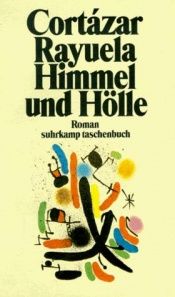
Time Travel at the end of the year. I said to Gregory, come to Cologne, enter the dark hours of the nighthawk, on air, and read from Julio Cortazar‘s masterpiece, one of our fave novels of all time, with its wonderful melange of sex and jazz, of mate tea, philosophy, and the misery and triumph of political exiles. It will all happen within the last two hours. I will just be pushing the envelope with some words while Grover Washington Jr. (sic!) is blowing his horn. We see some of the old cats and cross timelines with ease. There will be The Beatles, and Jack DeJohnette, there will be Nina Simone, and Donovan. And the one and only Bill Wells. Dead quiet vinyl. Constantly changing moods and grooves, the well-known and the forgotten, zig-zagging in the ripples of time.
2018 5 Nov.
… im „offenen Land“…
Michael Engelbrecht | Filed under: Blog | RSS 2.0 | TB | Tags: John Abercrombie, Open Land | Comments off
Tatsächlich dachte ich, weil man oft auch zu schnelle Schlüsse zieht, Class Trip sei das letzte grossartige Album von John Abercrombie gewesen, aber dann, als ich die DVD Open Land sah, bekam ich Lust, seine letzten Alben neu zu hören, in aller Ruhe, bald, denn auf einmal wurde mir klar, dass selbst seine Liebe zum alten Jazz keineswegs zum Gediegenen führte, sondern unentwegt dazu, im „offenen Land“ besonderen Texturen nachzuspüren, feinsten Schwingungen, und öfter wanderte der Blick zu dem grossen Bild in seinem Musikzimmer, ein vergrössertes, fast farbberauschtes Cover eines seiner Alben, wohl tief gelagert in viel zu blassen Erinnerungen, ich ahne es, zum Glück auch in meinem Archiv, das ich nie alphabetisch betreibe, vielmehr als Ansammlung guter Verstecke sehe.
2018 4 Nov.
A small conversation with Sigurd Hole about his two very fine 2018 releases (revised)
ijb | Filed under: Blog | RSS 2.0 | TB | Tags: ijb interview series | 2 Comments
Two weeks ago I went to see (and hear) Sigurd Hole’s trio at Berlin Mitte’s jazzclub b-flat. Sigurd had invited me to the concert after we had failed to meet in Oslo, even though our short-term residence (the apartment of friends who spent some time in our flat in Berlin) was only a few streets away from his apartment. I had already been well familiar with his versatile work in various bands – Karl Seglem’s acoustic quartet, five Eple Trio albums, a fascinating free-improv album with Seglem and Jonas Sjøvaag (West Wind Drift), and, most recently, Tord Gustavsen’s new trio album which I like so much more than the earlier trilogy of trio albums, among others. So when he sent me his two new albums which he released this year, I was surely interested in reviewing them.
I was not prepared, however, for such a unique trio recording: Sigurd recorded Encounters with Jarle Vespestad (whom he got to know through Gustavsen’s trio), who has already inscribed himself into recent Norwegian music with countless idiosyncratic projects and an always mesmerizing personal style of playing drums and percussion, and the younger Håkon Aase (whom Sigurd got to know though his teaching at Oslo’s music academy), whom I had briefly met in Kongsberg this summer, whose own bands (Yūgen, Filosofer) have shown innovative approaches between jazz, improvisation and folk and whose playing in other people’s bands (Mats Eilertsen, Thomas Strønen etc.) has caused Manfred Eicher to speak favorably of him. Which is why I was actually a bit surprised that Encounters was not released as an ECM album. It has all the necessary qualities for it. Anyway, Manfred Eicher probably likes it and I am positive that the next album by this trio will be recorded with him as a producer – and Encounters will have been „discovered“ by more people by then. It’s a truly beautiful and inspired recording, and their two-hour concert was a delight from beginning to end, with all of them playing jazz in sometimes unorthodox and always entertaining ways, while showing their best qualities as a band with unique instrumentation.
Elvesang, Sigurd’s other 2018 album is a more introspective album for bass solo, and even though it may not as immediately emotional, it is a very personal project, recorded in his home region, the rural municipality of Rendalen (Rena valley) somewhere between Oslo and Trondheim, „surrounded by farmland“, as he writes in his liner notes. This music seems to have grown out of this rural Norwegian place, you can even hear the weather and some birds.
I was curious to hear more about the background of this music:
- What is your connection to Japanese culture? I notice there are references on both these albums.
Well, it all started – triggered during my travels/tours in Japan – as a fascination with the Japanese culture and the history of Japan, especially focused around the role Zen Buddhism has played in both the Japanese society as a whole and in different kinds of Japanese art. This fascination has also lead to a keen interest in Zen Buddhism in particular, resulting in the reading of many books, experimenting with Zen meditation and visiting numerous temples in Japan. I find Zen temples a great source of quiet inspiration. I have walked down this road not to become a hardcore Zen Buddhist, but because I find in Zen ways of dealing with different aspects of life that I believe can be of great benefit both on an individual and collective level in a modern, western society. Not a groundbreaking discovery in itself as Zen has been adapted into the western world for a long time and has grown to become quite popular, however it has been an important discovery for myself.
Zen’s relationship with nature, and the key insight that human beings are a completely dependent on and an inseparable part of nature and all life on earth, and therefore should act accordingly in treating all our surroundings with the utmost care and love, is in my opinion the most important wisdom derived from Zen that we should strive to make part of our own lives. Looking around me, I sometimes feel like modern man, in general, has lost track of this sensation of unity with nature. Instead of being a part of nature, we strive to control and manipulate nature just to serve our own needs, without taking into consideration nature’s vulnerability. I believe it is of the utmost importance to renew our relationship with nature, as a humble, caring and inseparable part of a greater whole. Only then, with this starting point, I believe can we find the inspiration and motivation needed to change our way of life into a truly sustainable relationship with our surroundings.
- So how did this become an influence on your music-making?
The aspect of meditation has always, I believe, been an important part of my approach to music – both in practicing, playing solo and in playing with bands. Working more often than not with rather soft dynamics in minimalistic movements, long shapes and static situations in music, one may say that my general approach to music has an introvert quality. However, I do also enjoy the more playful aspects in music. I see no conflict between the two, quite the contrary, I see opportunity for developing meaningful dialogues between the meditative and the playful – within an aesthetic whole.
In Shakuhachi flute music, Honkyoku (traditionally used in the Fuke sect of Zen Buddhism in the practice of suizen – blowing meditation), I found many elements in the way of shaping sounds, phrasing, the use of quarter tones, and also in the aspects of time and silence, similar to what I was already doing in my solo work (this discovery happened maybe some four or five years ago). My airy and almost flutelike approach to arco playing has similarities to the sound of the Shakuhachi, making it a very natural approach in many ways. I also found inspiration in some of the written musical material for the Shakuhachi that I have tried to translate the double bass.
Another thing I find inspiring in Zen, is the approach to the now – the immediate way of responding to ones surroundings being completely in the now. For me, this is something very akin to being an improvising musician – always listening to ones surroundings with the utmost care, ready to respond to whatever happens. All in all, I find great resonance in Zen for what I want to express in my music on a deeper level. I hope to invite my audience into an almost meditative state of listening, giving a feeling of tranquility and inner peace – and at times also a feeling of restlessness and curiosity that might aspire to evolve a closer and more caring relationship with nature.
-
- What was the original starting point for the solo album? Where did the set of solo compositions start — and when was the point in time when you noticed it needed to be a solo album?
Ever since starting with Eple Trio in 2003, and later also in particular in my collaborations with Karl Seglem, I searched for ways of expressing myself on the double bass that had a relationship somehow with Norwegian traditional music. After a while, in every concert with Seglem, I was given a spot to play completely solo based on this musical approach. This became an important playground for me to experiment with the double bass as a solo instrument, trying out different approaches both on the practice room and then on stage – the best way of learning through getting an immediate response on communicating the music to an audience. Apart from the pure instrument-specific aspects, the aspect of time and timing was a very important thing in this process, feeling how long the different parts and movements should be in the whole of a solo composition / improvisation. The idea to make a solo album was maybe lurking in the back of my head, and in 2012 I believe, Misha Alperin (r.i.p.) heard me play solo at an award ceremony in Oslo. Afterwards, he told me that I should make a solo double bass album. It was very inspiring to hear someone like him say this, and it made be believe that I really could do this. However, it took still four years before I got the actual recording done – in July 2016. I learned a lot from the recording process, both in distilling and preparing the material on beforehand, the recording itself, and then the selection of parts and making the order of the album – it felt very satisfying to get to explore and concretize my ideas on an album.
-
- I have heard quite a few solo bass albums (Barre Phillips, Nils Davidsen, Joel Grip, Adam Pultz Melbye, Håkon Thelin…), and in a way they sometimes tend to be somewhat austere as by nature the bass is not the instrument most people would go out and buy a solo album of… So did you actually feel the need to develop an overall vision or idea for this album before you recorded it, to give yours a specific, unique approach, to address your personal vision to an audience — or did you go the other way, i.e. just follow your intuition without thinking about an audience during recording and writing?
The creative and great work of Stefano Scodanibbio, and also Håkon Thelin, have in recent years become important sources of inspiration for me in learning playing techniques I did not know before. In some of their material I might also find ideas that I “steal” and use as a starting point for making something else.
I never think of an audience when I compose or practice. However, this is not entirely true. Because I am listening myself, right? So in a way there is an audience present at all time. You need learn how to become a good listener to your own music when you are making it, to make decisions, what is good, what is bad, what to keep, what to throw away, and so on… but I never think “this will probably sound good to the kind of audience I want to reach with my music”. For me, thinking like that completely destroys the creative process. If I love what I make, there is also a chance that others might also like it. Which is of course very important to me. That being said, I believe that unconsciously, as a result of previous experiences performing music for an audience, the audience might play a minor role in the decisions I make in composing even though I am not aware of it.
The overall idea for Elvesang, for a long time, was simply to make an album where I explored the different playing techniques I used in my solo playing, giving each composition its own character based on the playing techniques. This way I could learn about my own playing, decide what is and what is not a clear enough musical idea to be something. So, it basically came from an idea to explore and distill the ideas in my own playing. Then, while preparing the different ideas in the days leading up to the recording, walking along a river on the way to my borrowed study in Rendalen, came the idea to make a piece called Elvesang (Riversong). To imitate, in an abstract manner, the sound of a river as the basis of an improvisation. This then became the bearing artistic idea behind all the pieces (apart from the opening track, Prelude, by far the most composed piece on the album): making small, abstract musical pictures of my own experience or sensation of different situations and different objects in nature.


